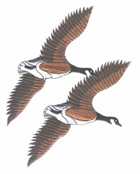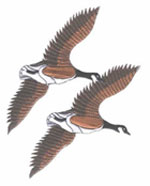Bolivia
To enlage click onto photo repeat to shrink
Map source
1538 The Spanish conquered Bolivia, which became part of the Vice-royalty of Peru.
1545 Silver Mountain, or Cerro Rico, discovered at Potosi in the southwest, providing Spain with immense wealth.
1824 Venezuelan freedom fighter Simon Bolivar, after whom Bolivia is named, liberates the country from Spanish rule.
1825 Bolivia became independent with Simon Bolivar as its president.
1836-39 Bolivia entered into a federation with Peru, but the federation failed following Peru's defeat in a war with Chile.
1879-84 Bolivia became landlocked after losing the mineral-rich coastal territory in the Atacama to Chile.
1903 Bolivia lost the rubber-rich province of Acre to Brazil.
1920 Saw a rebellion by its indigenous people.
1923 A revolt by miners was violently suppressed.
1932-35 Bolivia lost some of its territory to Paraguay after it was defeated in the Chaco War.
1952 Peasants and miners overthrew the military regime. Victor Paz Estenssoro returned from exile to become president and introduced social and economic reforms, including universal suffrage, nationalisation of tin mines and land redistribution, and improved education and the status of its indigenous people.
1964 Vice-President Rene Barrientos staged a military coup.
1967 The US helped suppress a peasant uprising led by Ernesto "Che" Guevara, who was killed after being betrayed by peasants.
1969 Vice-President Siles Salinas replaced Barrientos who was killed in plane crash, but Salinas was himself deposed by the army, which ruled with increased severity.
1971 Col. Hugo Banzer Suarez came to power after staging a military coup.
1974 Banzer postponed the elections and banned political and trade union activity in the wake of an attempted coup.
1980 General Luis Garcia staged a coup after inconclusive elections. US and European countries suspend aid in view of allegations of corruption and drug trafficking.
1981 General Celso Torrelio Villa replaced Garcia, who was forced to resign.
1982 Torrelio resigned as the economy worsened. The military junta handed over power to a civilian administration led by Siles Zuazo, who headed a leftist government.
1983 US and European countries resumed aid following the introduction of austerity measures.
1985 Siles resigned in the wake of a general strike and an attempted coup. Elections were held but were inconclusive. The parliament choose Paz Estenssoro as its president.
1986 Twenty-one thousand miners lost their jobs following the collapse of the world tin market.
1989 Leftist Jaime Paz Zamora became president and entered into a power-sharing pact with the former dictator Hugo Banzer.
1990 4 million acres of rainforest was allocated to indigenous people.
1993 Banzer withdrew from the presidential race, which was eventually won by Gonzalo Sanchez de Lozada.
1997 Banzer was elected president.
1998 Banzer told the United Nations that he was committed to freeing Bolivia from drugs before the end of his term in office (2002).
1999 Encouraged by moves to prosecute former Chilean dictator Augusto Pinochet, the opposition demanded an inquiry into Banzer's role during the repression of the 1970s.
2000 Banzer announced the almost total eradication of the coca plant in the Chapare jungle region.
January 2001 The Government declared almost half of Bolivia a natural disaster area following heavy rains and floods.
8th August 2001 Vice-President Jorge Quiroga was sworn in as president, replacing Hugo Banzer who was suffering from cancer. He later died in May 2002.
December 2001 The farmers rejected a government offer of $900 each a year in exchange for the eradication of the coca crop used to produce cocaine.
August 2002 Gonzalo Sanchez de Lozada won a clear victory in a National Congress run-off vote and became president for a second time. His rival, coca growers' representative Evo Morales, lead a strengthened opposition.
February 2003 More than 30 people were killed in violent protests against a proposed income tax. Later President Sanchez de Lozada withdrew the proposal.
September-October 2003 80 people were killed and hundreds injured in protests fuelled by government plans to export natural gas via Chile. President Sanchez de Lozada resigned under pressure of protests and was succeeded by Carlos Mesa.
2nd April 004 President Mesa signed a natural gas export deal with Argentina. Opponents said the deal pre-empted a referendum on gas exports that was planned for July. Protesters took to streets demanding the president's resignation.
July 2004 A referendum was held on gas exports. Voters backed a greater state involvement in the industry and approve exports of the resource.
August 2004 A landmark deal was signed to allow Bolivia to export gas via a Peruvian port.
January 2005 Rising fuel prices triggered large-scale anti-government protests and blockades in Santa Cruz, the country's largest and wealthiest city, and in El Alto, near La Paz. Civic and business leaders in Santa Cruz push for autonomy for the province.
March 2005 President Mesa submitted his resignation, blaming protests which he reported had made it impossible to govern. Congress rejected the offer, as well as a later request by the president for an early elections, and Mr Mesa remains in office.
May 2005 Protests over energy resources brought La Paz, and government business to a near standstill. President Mesa promised a rewritten constitution and a referendum on autonomy demands from resource-rich provinces.
June 2005 As angry street protests continue, President Mesa resigned. The Supreme Court head Eduardo Rodriguez was sworn in as caretaker president.
December 2005 Socialist leader Evo Morales won presidential elections. He became the first indigenous Bolivian to take office.
May 2006 President Morales issued a decree to put the energy industry under state control.
June 2006 President Morales claimed a victory in elections for a new assembly which would write a new constitution aimed at giving more power to the indigenous majority.
October 2006 Clashes between rival groups of tin miners left 16 people dead in the town of Huanuni.
November 2006 A land reform bill was narrowly approved by the Senate. The bill aimed to expropriate up to one fifth of Bolivian land for redistribution to the landless poor.
December 2006 Bolivia completed its gas nationalisation programme that had been launched back in May, giving the state full control over the operations of foreign energy firms in the country.
January 2007 Pro-Morales trade unionists and coca growers set up a parallel local government in Cochabamba and demanded the resignation of the state's pro-autonomy governor. Clashes left two people dead, while the Government declared a state of emergency after months of heavy rain leave dozens of people dead and many thousands homeless.
May 2007 President Morales spearheaded a protest campaign after world football's governing body, FIFA, banned international games at high altitudes. The ban ruled out international matches in cities such as La Paz and Potosi.
August 2007 Presidents of Bolivia, Venezuela and Argentina signed joint energy deals worth more than $1bn.
December 2007 President Morales formally received a controversial new draft constitution which he said would promote re-distribution of the country's wealth and give a greater voice to the indigenous majority.
August 2008 President Morales gained 67% of vote to recall a referendum on his leadership.
September 2008 Anti-government protests escalated into violence in the east and north of Bolivia, leaving 30 people killed in the worst-affected region, the northern province of Pando. The government and opposition agreed to talks in an effort to resolve the crisis. Bolivia expelled the US ambassador, accusing him of fomenting civil unrest in the country. Washington reciprocated by expelling the Bolivian ambassador from the US.
November 2008 Bolivia stoped the US drug enforcement agency from operating in the country.
January 2009 A new constitution giving greater rights to indigenous majority was approved in a national referendum, with more than 60% voting in favour.
April 2009 President Morales said a plot to assassinate him was foiled when police killed three international mercenaries in a raid on a house in the opposition stronghold Santa Cruz.
May 2009 Ex-President Gonzalo Sanchez de Lozada was tried in absentia over the deaths of 60 during protests during 2003.
December 2009 President Morales was re-elected for a second term with more than 60% of the vote.
May 2010 President Morales ordered the nationalisation of four electricity firms, reporting the state then controlled 80% of country's power generation. Strikes and rallies against government wage policies persisted. President Morales meet with the Pope, and urges him to allow priests to marry.
October 2010 The government scraped the new law designed to cut cocaine production in response to anger from coca growers.
March 2011 Brazil and Bolivia agreed to jointly tackle drug production and trafficking in their countries.
Source
http://news.bbc.co.uk
Articles of Interest



